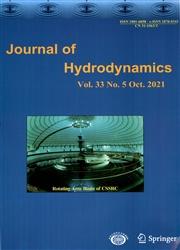Shock waves and water wing in slit-type energy dissipaters
IF 3.4
3区 工程技术
Q1 MECHANICS
引用次数: 7
Abstract
The slit-type energy dissipater (STED) is widely used in hydraulic projects of high water head, large discharge, and narrow river valley, thanks to its simple structure and high efficiency. However, the water wing caused by the shock waves in the contraction section of the STED may bring about harmful effects. A coefficient is introduced for the application of Ippen's theory in the STED. The expression of the coefficient is experimentally obtained. Simplified formulas to calculate the shock wave angle and the water wing scope are theoretically derived, with relative errors within 5%.
缝式消能器中的激波与水翼
缝式消能器结构简单、效率高,广泛应用于高水头、大流量、窄河谷等水利工程中。然而,STED收缩段激波引起的水翼可能带来有害影响。为Ippen理论在STED中的应用引入了一个系数。实验得到了该系数的表达式。理论上推导了激波角和水翼范围的简化计算公式,相对误差在5%以内。
本文章由计算机程序翻译,如有差异,请以英文原文为准。
求助全文
约1分钟内获得全文
求助全文

 求助内容:
求助内容: 应助结果提醒方式:
应助结果提醒方式:


